We arrived in Sri Lanka about 6:00 am. Sri Lankan Immigration officials came on board when we left Singapore so we were cleared before we arrived.
Sri Lanka is primarily a Buddhist country.
After a great breakfast we were off to our excursion “Elephants of Pinnawela By Train”.
About 9:00 am we boarded the bus and headed to the Colombo Fort train station. On the way we saw two of the iconic features of Colombo: the Lotus Tower and the huge Buddhist shrine (stupa) Sambodhi Chaithya.
Seems like every large city has a distinguishing tower and Colombo is no different. This one is shaped like a lotus flower thus the name “Colombo Lotus Tower”. It is 1,159 ft tall and is used for communications as well as recreation. It also has a revolving restaurant and an observation deck.
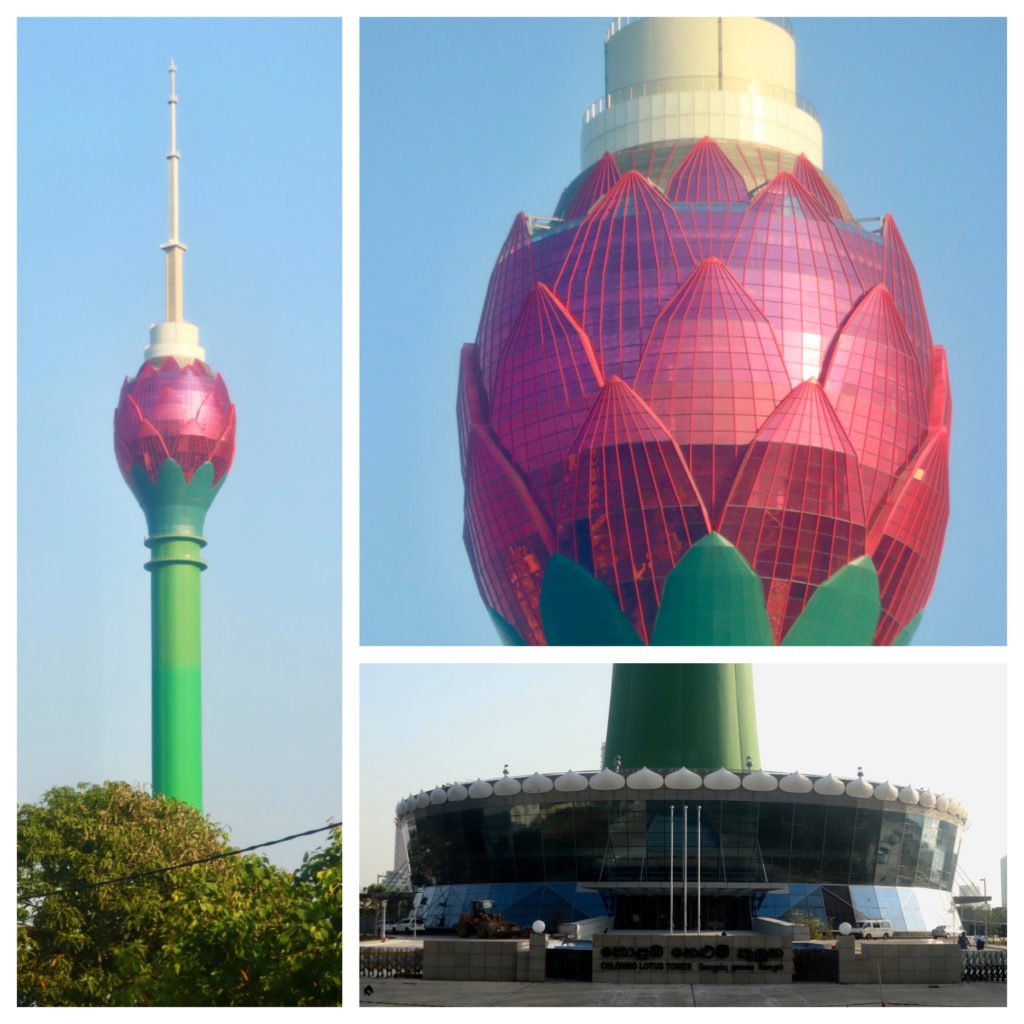
Construction began on the Sambodhi Chaithya in 1956. It commemorates Buddha’s enlightenment and teachings. If you’re up to it, you can climb the 123 steps to the entry.

After 10 minutes of bus travel we reached the train station. Since it was a work day the station was very busy with people arriving and departing for work. It seems we were the only ones not in a hurry.
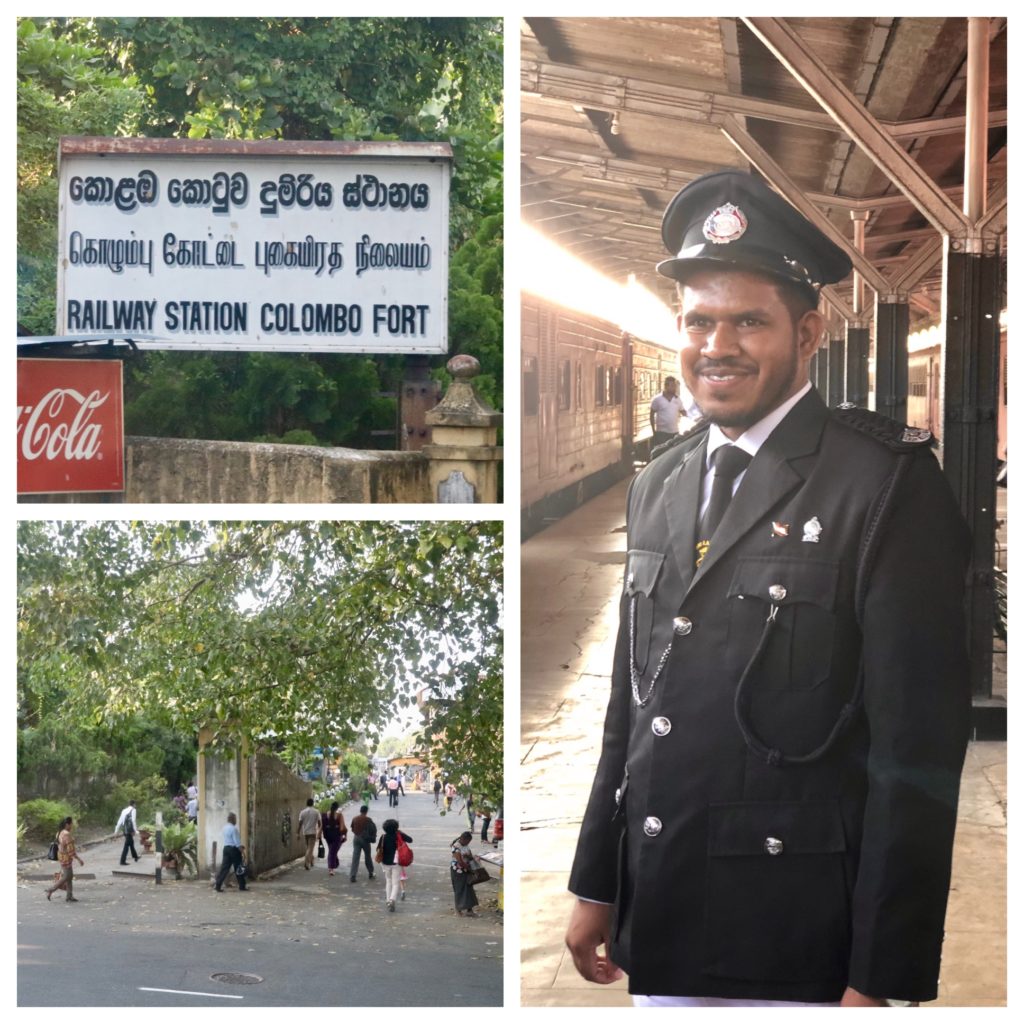
About 15 minutes later our chartered train “The Viceroy Special” arrived. Our conductor showed us to our train car and got us settled for our two hour ride to Pinnawela. The interior of the train car was a throwback to the early British Raj era. Each seat had a real table with tablecloth and placemat. About 10 minutes into the trip tea (Ceylon tea of course!) or coffee was served.

The time went by quickly and the countryside was very beautiful. We saw several Buddhist temples/shrines on the way.
We arrived at the Rambukkana train station and re-boarded a bus for a short ride to the village of Pinnawela and the elephant orphanage. The orphanage was originally founded to care for orphaned elephants but has also become a nursery and breeding ground for wild Asian elephants. Their current herd of elephants is around 90.
As we arrived we noticed some interesting signs. One warned us to be careful and to watch for crossing elephants! Another advertised an elephant bathing place. While another advertised “Poo Paper Sold Here”. I thought this was advertising toilet paper for the tourists. Actually they are advertising handmade paper and paper products made from elephant poo! I won’t go into the process but just say there were a lot of paper products for sale.
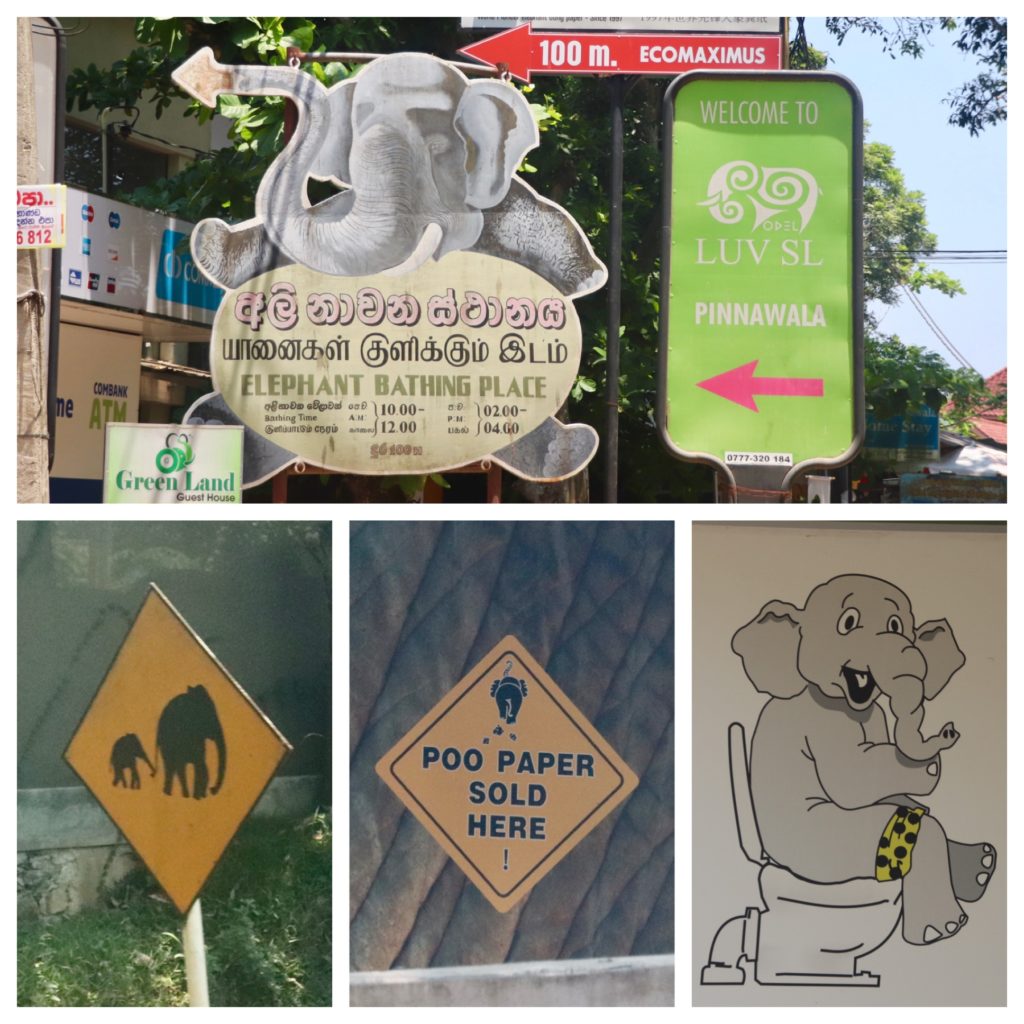
Our trip was planned perfectly and we were in time to watch a portion of the herd getting their bath in the local river. The elephants actually live about 1/2 mile away from the river (thus the crossing sign). Twice a day they are marched through town into the river where they bathe about an hour. A firehose nozzle is used to wet help them down. The elephants seemed to enjoy the spray and the cooling water.
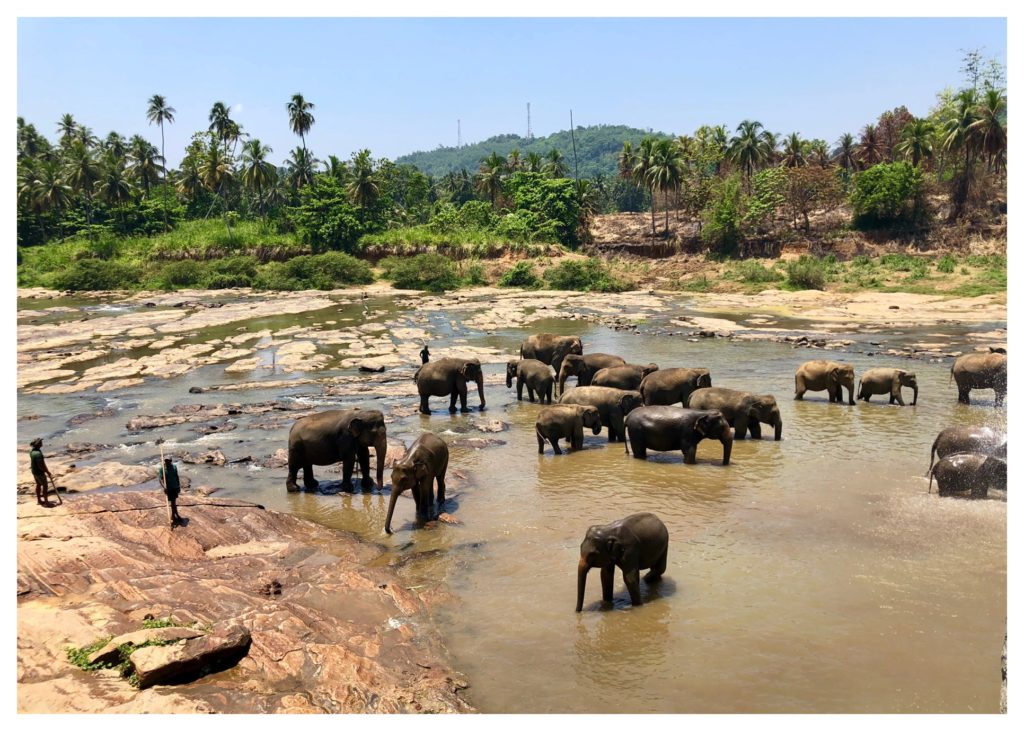

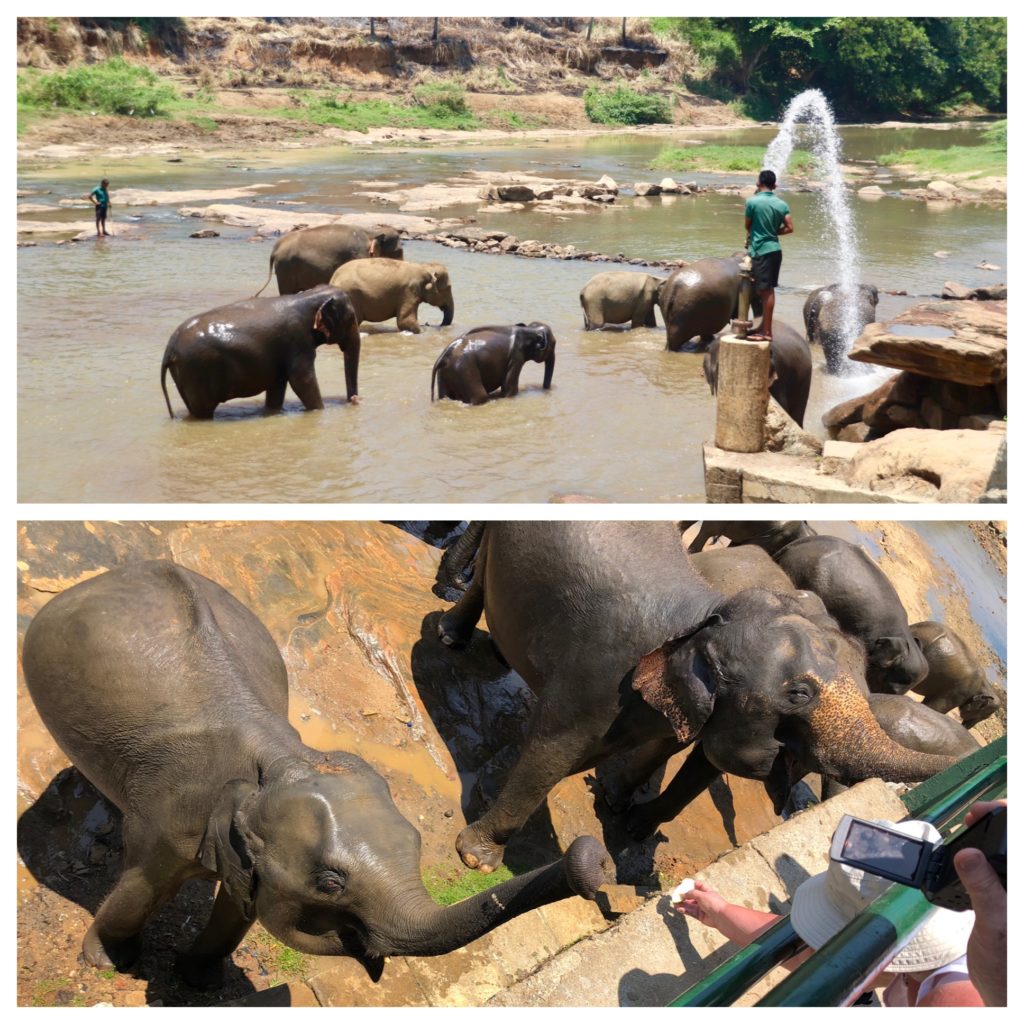
After an hour they are herded together for the march back to the Orphanage. At that time tourists can buy food and feed them if they want. Once the herd is ready the march back to the orphanage begins. The route back takes them on the same street as the souvenir shops. After the elephants pass you can pickup your own “souvenir” if you want.
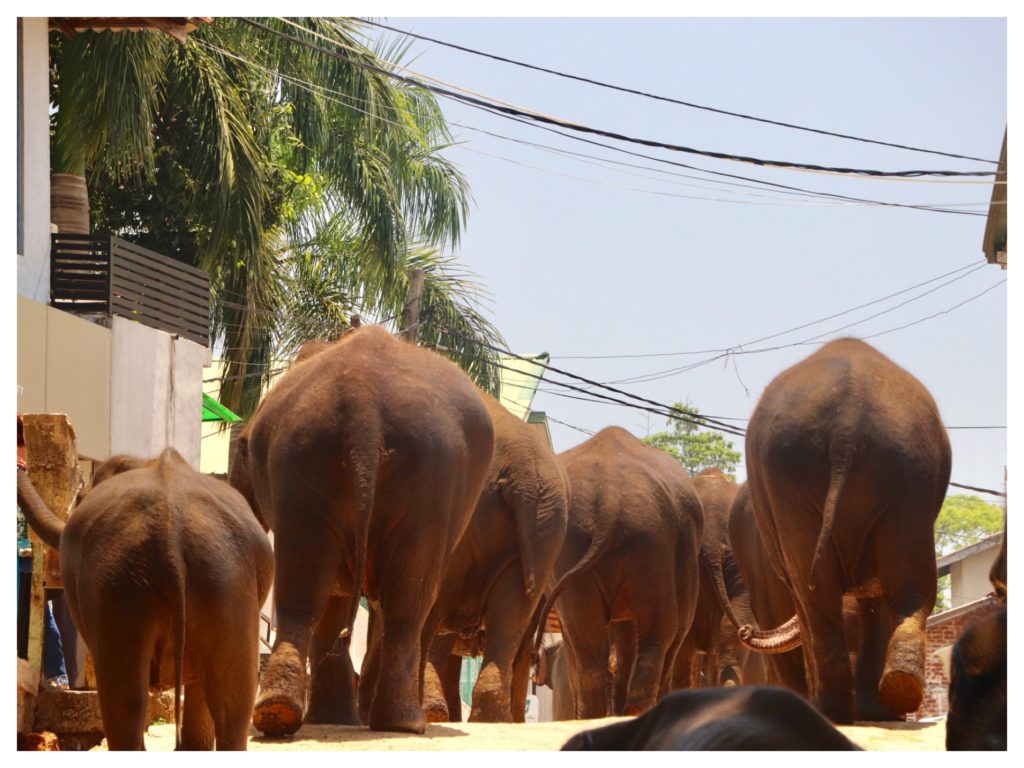
When the elephants were gone we went to a restaurant that overlooks the river for lunch. We had a very tasty Indian meal. While we were eating, about six elephants showed up at the river for their bath. It was great fun eating and watching them bathe.
After lunch we had a little time to visit the souvenir shops and then walked to the Orphanage. We arrived just as the six other elephants returned from their bath. A few minutes later it was time for another group of elephants to leave for their trip to the river. It was kinda scary watching this huge herd of elephants walk by only a couple of feet away. However the handlers made sure to keep them in line.
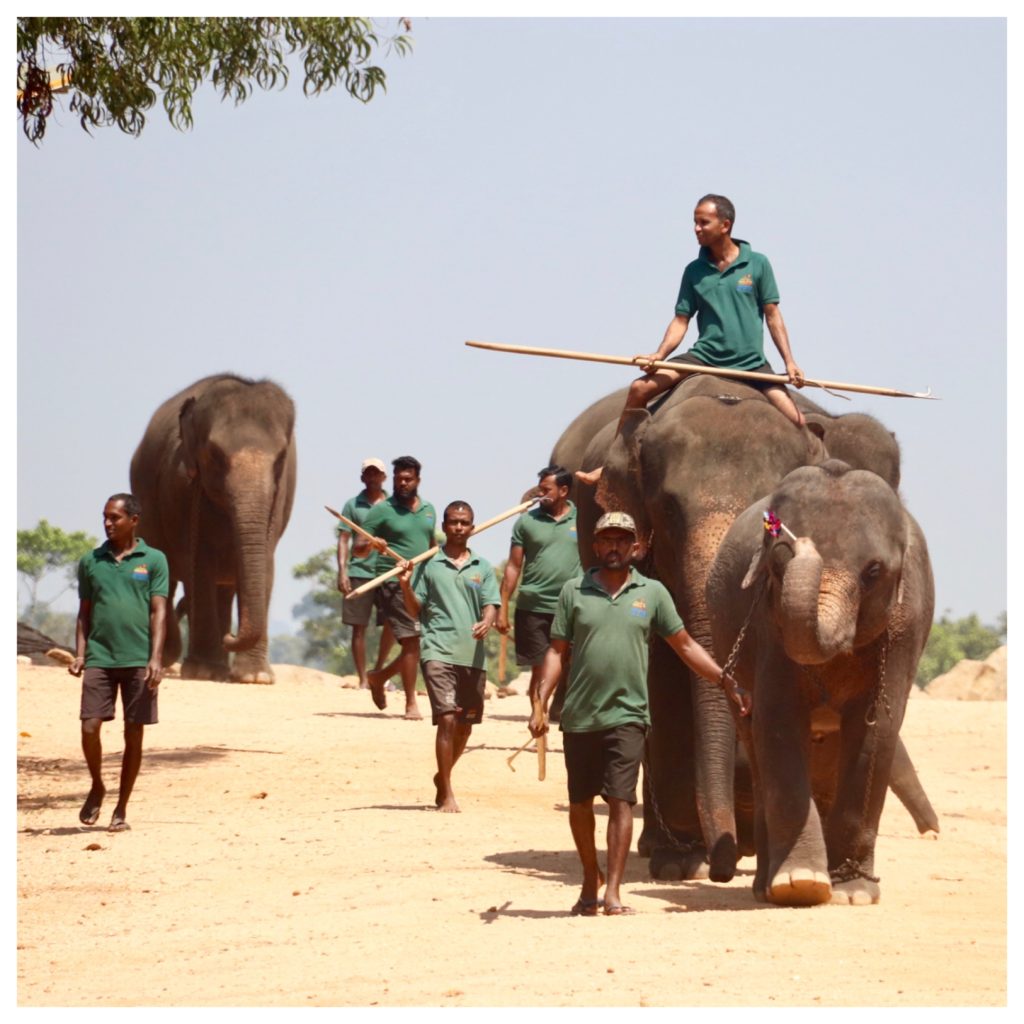
We wandered around the orphanage for about an hour and then began our 2 hour trip back to the ship.
About 5 minutes before we arrived back at Colombo Fort station we saw a huge and very colorful Hindu temple. We wished we had time to stop and explore it but the ship was due to leave in 30 minutes so we had to return to the ship.
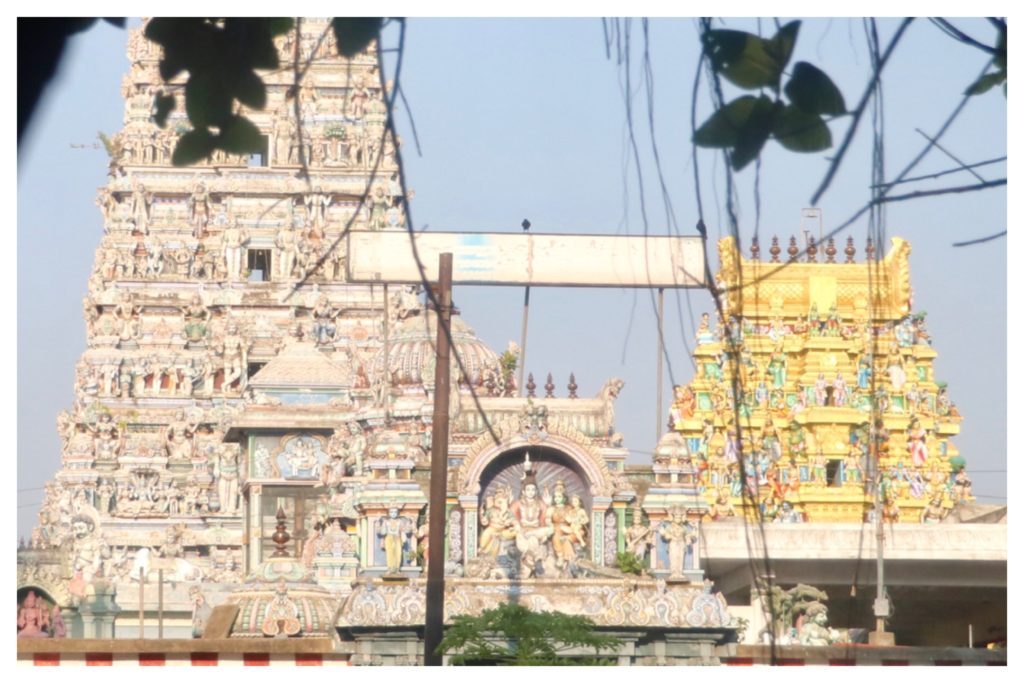
All in all it was a great day.
Today Ron and Paul took different tours. Ron’s excursion today was called “Around The Island” and Paul’s was called “Mysteries of the Orient”.
Ron’s tour started off with a visit to the Tiong Bahru Wet Market to view the local vegetable and meat available in Singapore. He had seen wet markets in other cities and saw nothing unique except for what looked like a couple of stalls of toys. On closer examination they turned out to be cardboard or paper replicas of real products made to be burned at an ancestor’s grave due to a folk belief in China that if you burn these, the deceased will receive them and benefit from them for a happy afterlife. The practice is often seen on the annual tomb-sweeping day in early April known as Quingming Festival.
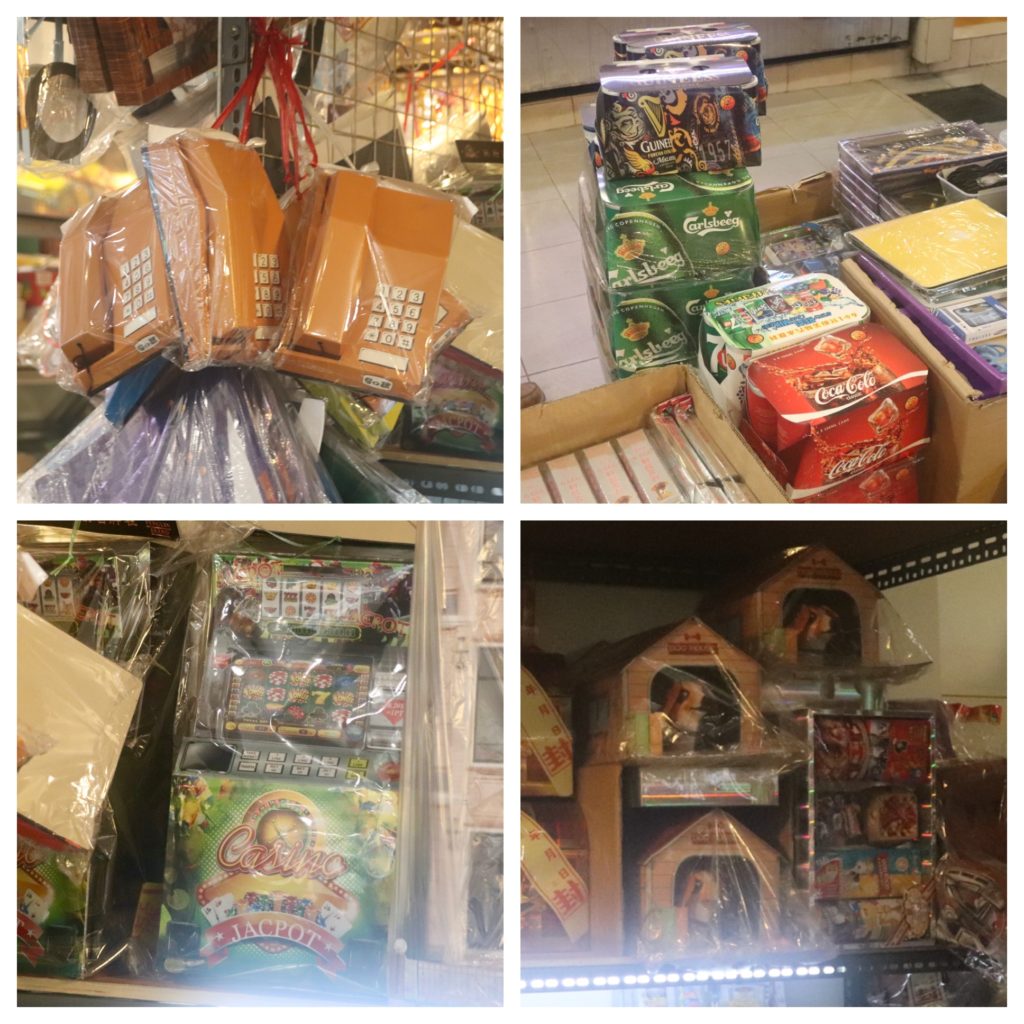
The second floor of the market contained a large food court. Ron thought the names of two of the foods being offered were interesting.
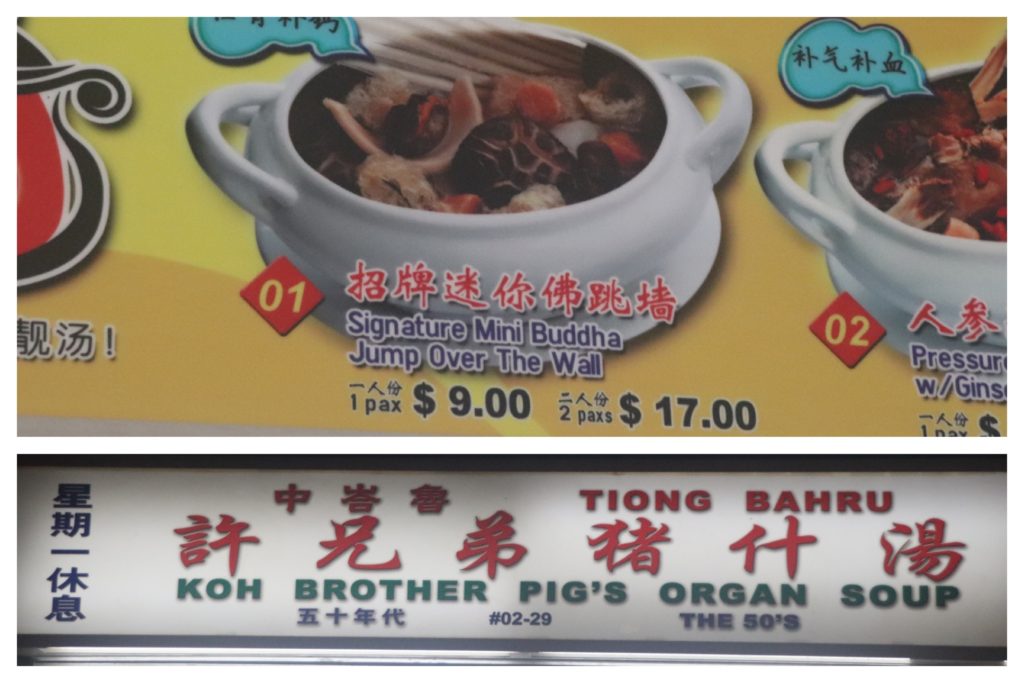
After he left the market he traveled to to north side of the island to see Kranji Dam area which is another of the huge water reservoirs in Singapore.
A short distance from the dam is the WWII Kranji War Memorial & Cemetery. The building was designed to honor the different branches of the Armed services. The columns honors the Army. The roof in the shape of a wing honors the Air Force. Lastly the structure sitting atop the roof resembling a submarine’s conning tower honors the Navy.
The War Cemetery is the final resting place for 4,458 Allied servicemen of the British crown in marked graves laid out in rows. Over 850 of these graves are unidentified. Inscribed on the walls of the memorial are over 24,000 names of allied personnel whose bodies were never found.

What appears to be a large cross in front of the Memorial is in fact a sword indicating the military nature of the cemetery as it honors soldiers of all faiths who died in the defense of Singapore.
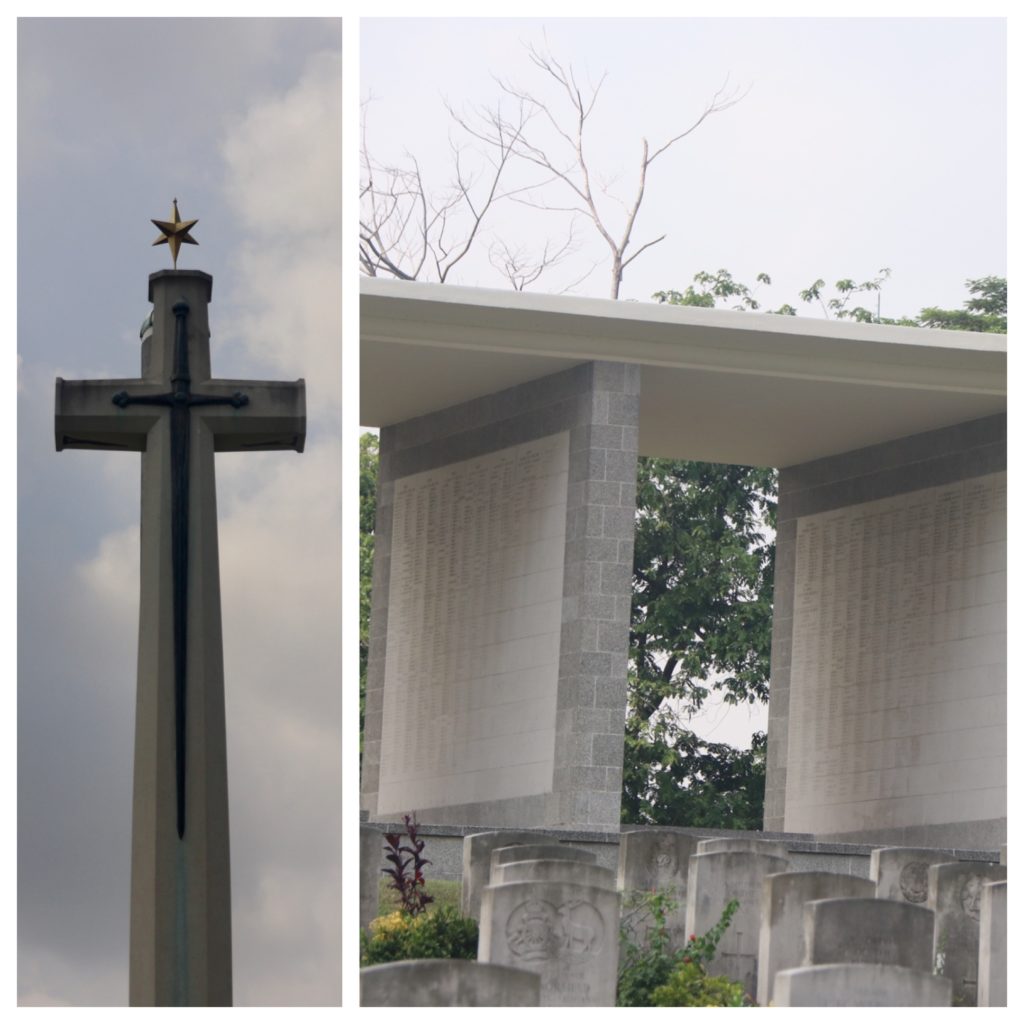
It’s interesting to note that from the cemetery you can look across the Straits of Johore and see the small tower amongst the skyscrapers in Malaysia that was once the headquarters of Japanese general Yamashita who directed the attack on Singapore and later received its surrender.

Later Ron visited the Johore Gun Battery site on Singapore’s eastern coast in Changi (home to the infamous prisoner of war camp) whose “monster” guns were built to prevent invasion by Japan. Unfortunately the guns were very inefficient and never really caused any damage to attacking forces. The originals were destroyed by the British at the fall of Singapore, this is just a replica.

Lastly Ron visited what may be the largest Buddhist Temple complex in the world “Kong Meng San Phor Kark See Monastery”. Multiple temples comprise the complex each with a different manifestation of the Buddha. Many of the buildings were very beautifully ornamented. He also saw the workers setting up tables for the annual tomb-sweeping day on April 5th known as Quingming Festival for ancestors without a local tomb.
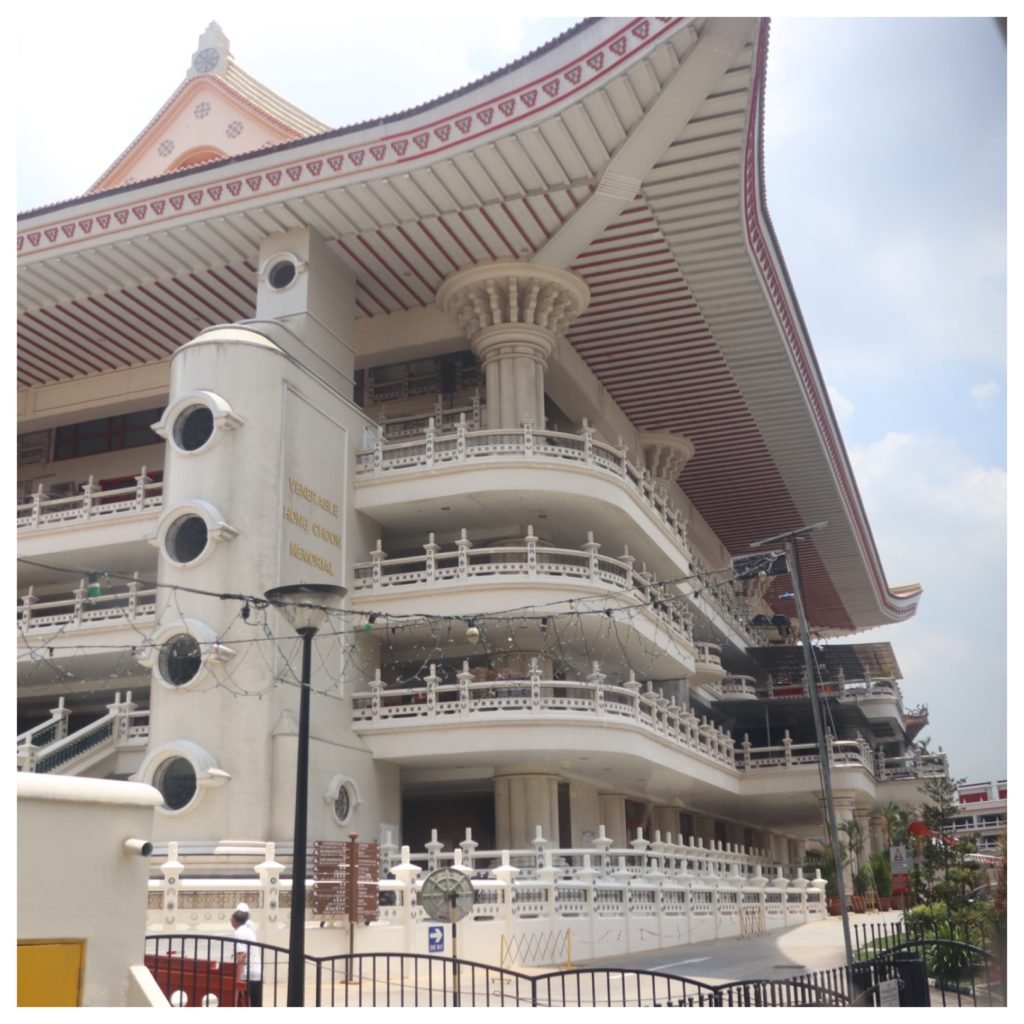

The ancestor’s name is written on a paper and posted on a table. A makeshift altar is then added to the table, incense is burned, and the ceremonial rituals are performed there. This is just one hall of many being readied for the festival.
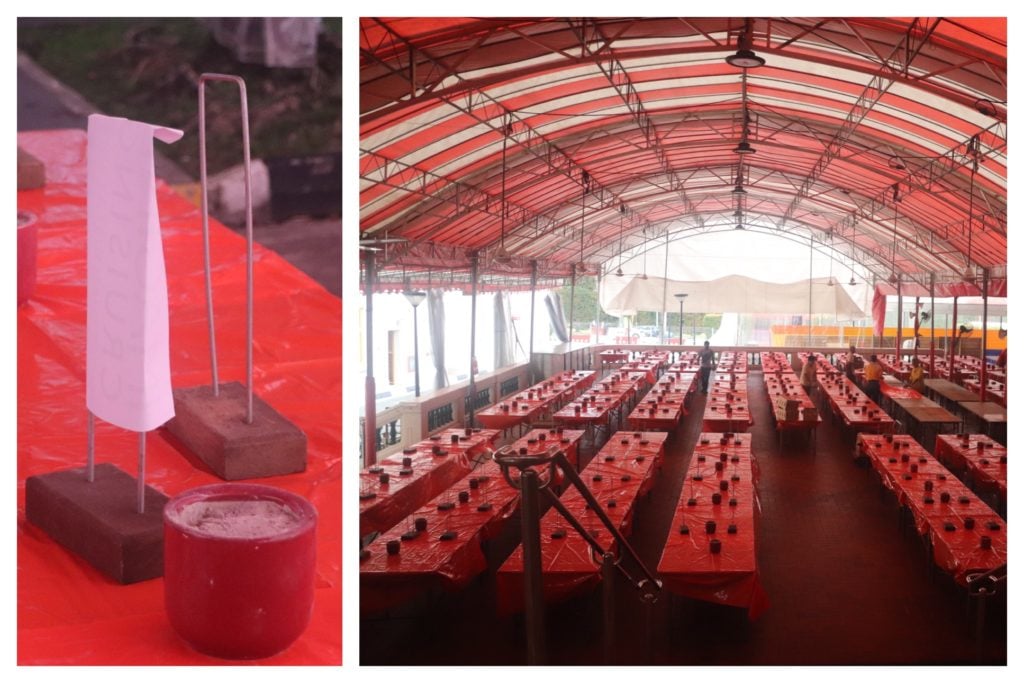
Ron spent about 45 minutes at the temple and then returned to the ship.
Paul’s excursion was a lesson in Feng Shui and how it applies to buildings in Singapore. We heard about the five elements and how shapes of buildings represent these elements… tall for wood, short for earth, pointy for fire, round for metal, and wavy for water. Our first visit was to the financial center where the buildings represent the five elements and form a hand to draw in and hold the wealth for Singapore.
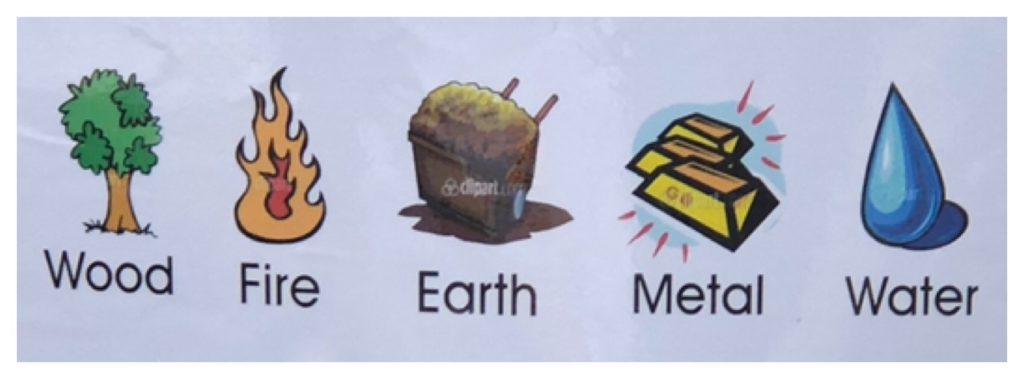
Four tall buildings (wood) form the fingers, a smaller building (earth) is the thumb. Fire is represented by the pointed tops on the convention center. The gold ring-shaped fountain represents metal and the water element is in the fountain. Water also represents money. The fountain is even called the Fountain of Wealth.
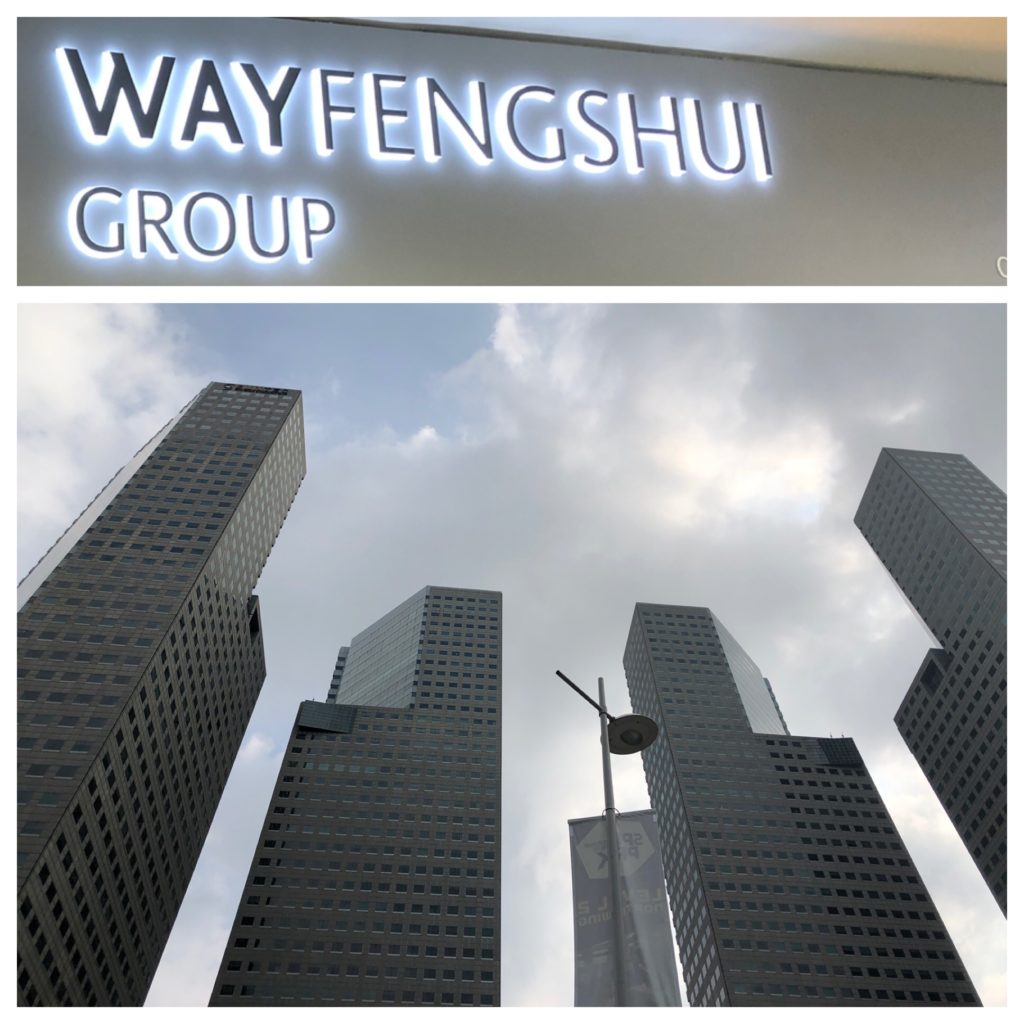
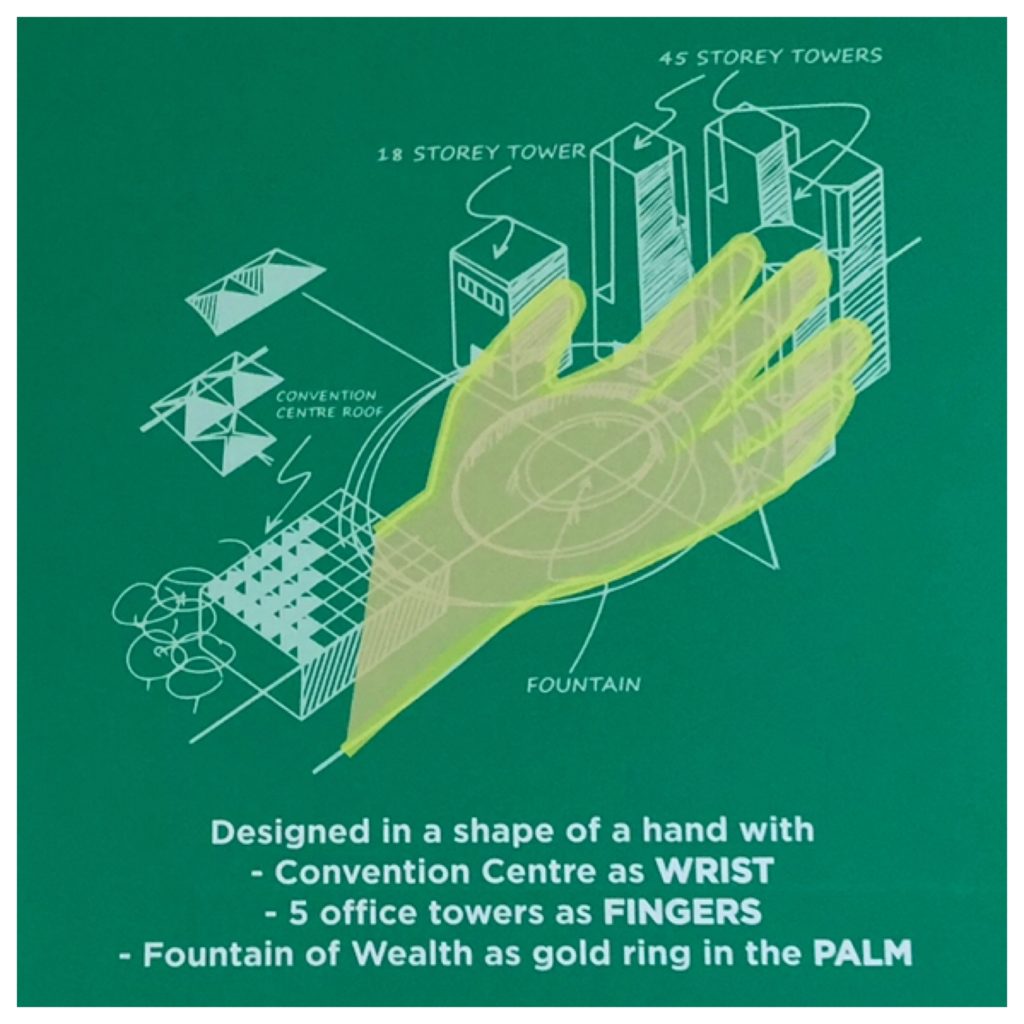
Below the ground level, you can enter the fountain through a mall and perform a luck-building exercise. Walking three times in a clockwise direction, you hold your hand in the fountain’s waters and make a silent wish. I wished for good health.

The number 13 is an auspicious number for the Chinese and is represented in this hotel building in the arrangement of the windows as well as the 13 rows of windows on the building.
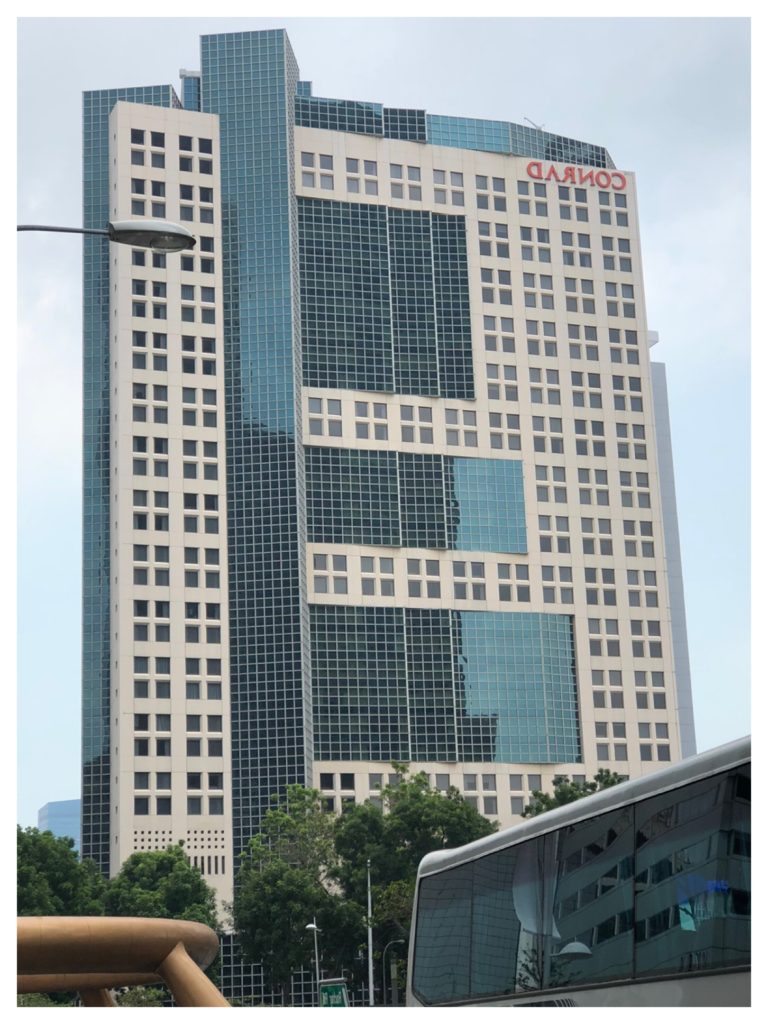
Our final stop was to the largest bank (UOB) in Singapore where Feng Shui principles were also in play. Located along the river, the water represented money. The open spaces and large lobbies of the buildings represented ambition and stability. Across from the bank’s main entrance was an enormous gold coin. The sculptures of a bird and Salvador Dali’s Isaac Newton meant that even though the bank was in business about money, it also valued heart and nature. Equilibrium between the elements was an important part of Feng Shui.
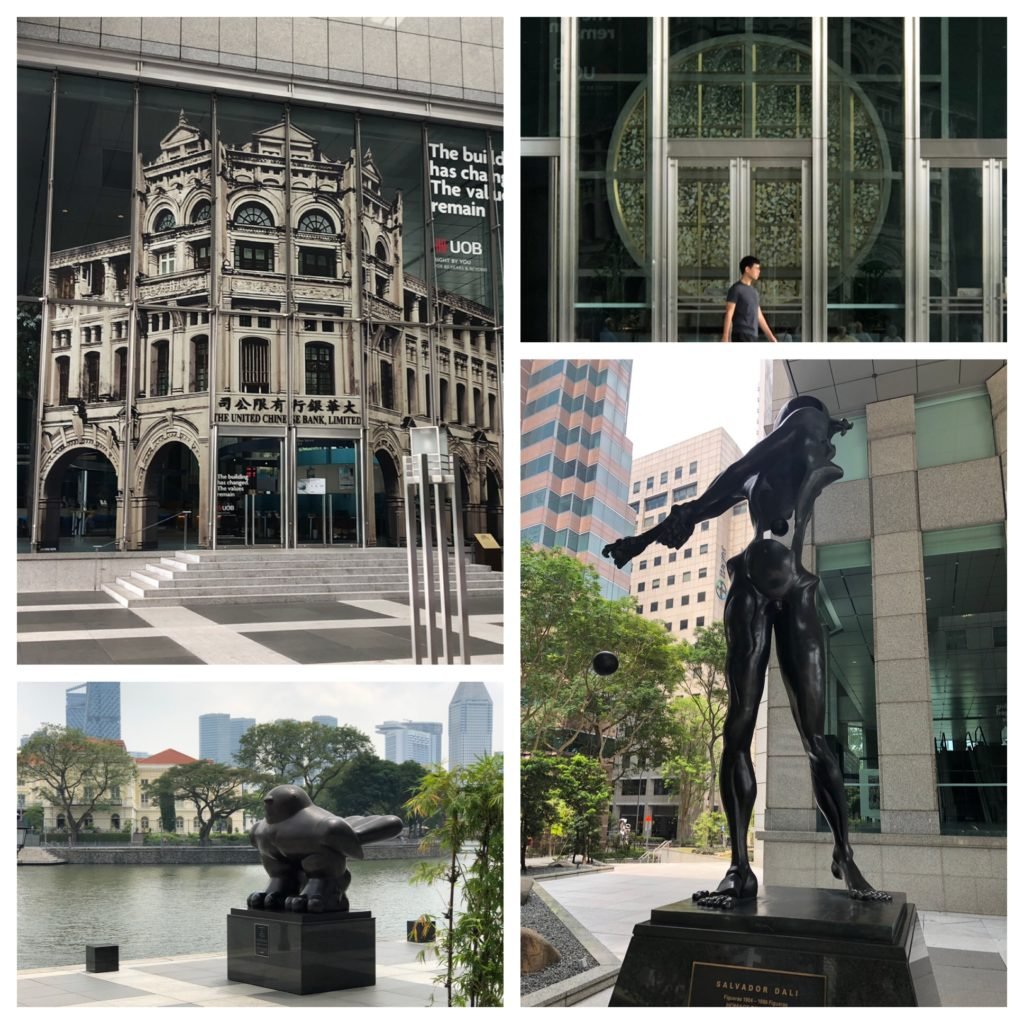
All in all, it was an interesting tour and gave insight into this culture.
Having visited Singapore two years ago we didn’t feel we needed to take city overview tours so we took tours to specific sites/attractions in the city.
Today’s excursion was called “Gardens By The Bay & Marina Bay Observation Deck”.
The Marina Bay Sands Hotel is a beautiful Hotel with what many people call a boat built on top. It has three towers each of 58 stories with an infinity view swimming pool, restaurant, and observation deck on top. Paul was able to take some great views of the city from there including the garden & domes we’d visit.


In the gardens surrounding the domes were huge man made “trees”. Besides looking aesthetically beautiful they also serve three additional functions. Firstly they are wired with lights to produce a light show at night. Secondly they have solar panels installed to help produce electricity used to power the garden domes. Finally they also serve as rain collectors.


Singapore averages 92.1 inches of rain per year. Since it has no natural sources of water (it imports additional water from Malaysia) it has built large reservoirs around the city to capture the runoff for drinking. Another reservoir is located under the Marina Bay Sands Hotel. Some of it’s water is used on the gardens and surrounding greenbelts.
Both garden domes house major exhibits of plants by geographical region e.g. Africa, Mediterranean, etc as well by variety e.g. orchids, succulents. A special exhibit of blossoming Cherry trees from Japan was also on display.
The second dome was the “Cloud Forest”. Inside was a 90 ft waterfall! Walkways were built at various levels throughout the dome for added thrills (not for someone afraid of heights).


Also, sprinkled throughout the dome were pieces of art: some serious, mostly just fun. I especially liked the carnivorous plants made out of LEGOs at the top of the waterfall.

We spent our 2 hours here and then returned backed to the ship.
On a sadder note, the ladies from Toronto that we dine with left us in Singapore. We met them on the 2017 cruise and enjoyed their company a lot.

If you are squeamish, you might want to skip this post and move on to Singapore.
If you have seen Jack Nicholson in Bucket List, you have heard of Civet Cat coffee or kopi luwak. Kopi is the Indonesian word for coffee and Luwak is the local name of the civet cat who eats the red coffee “cherries” as part of its usual diet. The cat excretes the beans intact, but the enzymes in the stomach of the civet adds to the coffee’s flavor through fermentation of some type. Some argue that the civet cat also chooses to eat only certain cherries which also adds to the flavor.

The locals collect the feces from civet cats who live around the coffee plantations. This is cleaned, processed, and turned into the most expensive coffee in the world. During our tours, we were able to buy some of this coffee as beans, but we did not find anywhere to actually sample the drink. We’ve heard people call it “cat poop-accino”.

I read that the traditional methods of gathering the feces is being replaced by intensive farming methods where the animals are kept in cages and fed the coffee cherries. I hope our sample came from “free range” civet cats.

This morning we arrived at Semarang around 7:00 a.m. Once again we were greeted by cultural dancers and musicians on the pier as well as a country and western combo inside the terminal!


We left the ship about 8:30 a.m. for a day long excursion entitled “Borobudur By Train”.
In order to get to the train we had to take a 1/2 hour trip by bus to the station in the village of Tuntang. There were three buses from the ship on our tour and to make our traveling easier, we had a police escort all day!

We boarded the train and rode up the track for about a half hour. Along the way we passed a large vegetation-covered lake which is basically used for various types of farming and huge rice fields.

As we pulled into the station at Ambarawa we were greeted by a group of elementary school children. We reloaded our buses for an additional hour and a half ride to Borobudur.

Borobudur is the world’s largest Buddhist temple located on what is now a predominantly Muslim island. The temple consists of nine stacked platforms, six square and three circular, topped by a central dome or “stupa”. It is decorated with 2,672 carved panels many of which are about the life of Buddha and his parables. There are also 504 Buddha statues. The central dome, or stupa, is surrounded by 72 Buddha statues, each seated inside a smaller perforated stupa. No one know for sure why, but just a few short years after completion of the temple it was suddenly abandoned and consumed by the jungle. It lay hidden for 1000 years until it was rediscovered and reclamation began in 1814.




To reach the top platform you have to climb some very steep stairs. By the time you’ve reach the top platform with the stupas, you’ve passed the the different realms of Hindu life and arrived at the enlightened stage.



We spent about an hour at the temple before descending to get to lunch. After a very tasty meal we reboarded our bus for the return trip.